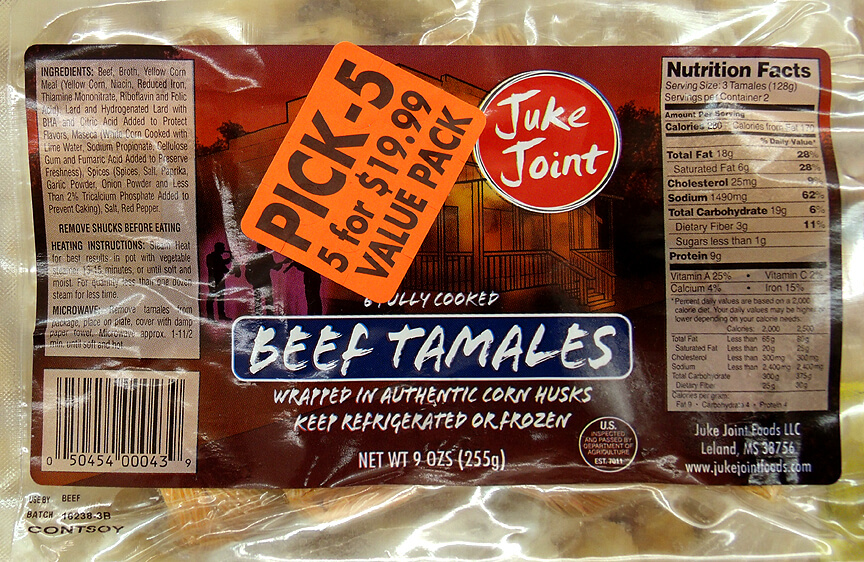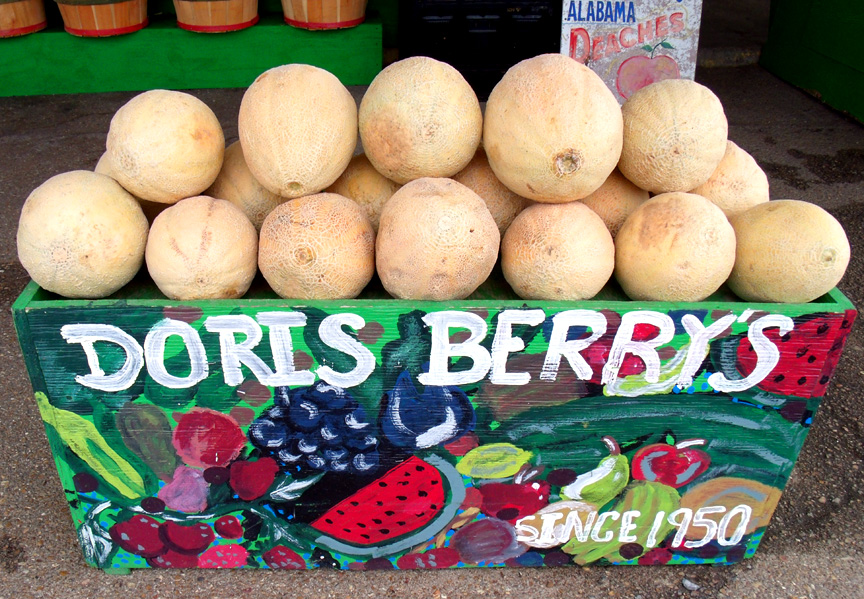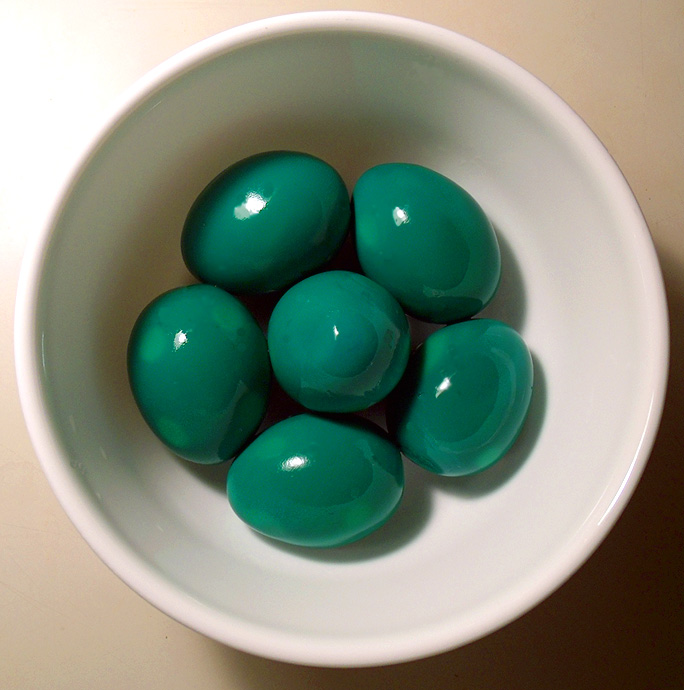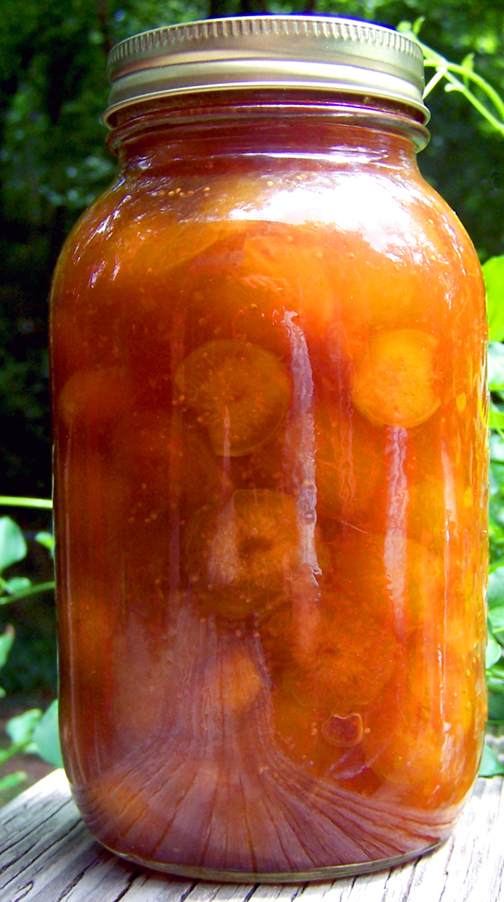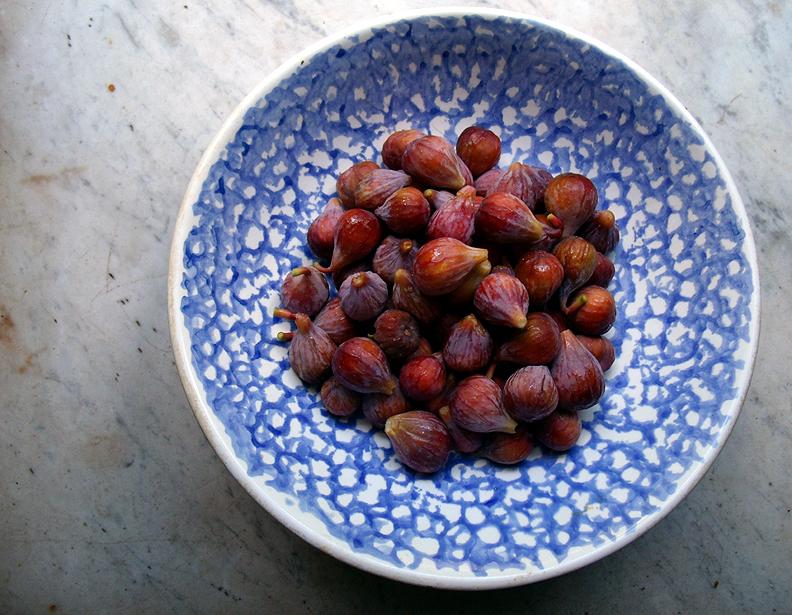October Peppers
A Culinary Classic from Water Valley
The B.T.C. Old-Fashioned Grocery Cookbook spotlights small town Main Street South and focuses on good, real people creating real good food and helping to make the world a better place. With this book the authors, entrepreneur Alexe van Beuren and chef Dixie Grimes, celebrate their home in north Mississippi. Like many towns in the rural South, Water Valley has languished; once busy squares and streets are lined with broken sidewalks and historic buildings are being sold for bricks. But in Water Valley, community is in focus, and though the B.T.C. Old-Fashioned Grocery has become a vibrant element in the town, Alexe and Dixie will be the first to tell you that the B.T.C. Grocery did not revive Water Valley: “Water Valley revived us.” Their book pulses with heart and glows with the warmth of their revival: a cornucopia of extraordinary food, exceptional writing and bountiful spirit.
The B.T.C. Old-Fashioned Grocery Cookbook often ranges far from the table, but first and foremost it is about food, beautiful food. Chef Dixie Grimes cut her teeth in local restaurants, and her talents are enriched by time. In the B.T.C. cookbook, Dixie’s foods can be divided into two broad categories: traditional Mississippi recipes, many she learned in the Oxford kitchen of her grandmother Vetra Stephens; and progressive dishes that are the product of years of experience and an exceptional feel for the ingredients and how they work together in any given recipe. Dixie says that the food of Mississippi is too easily overlooked or dismissed because of its simplicity and her respect for and propagation of the traditional ingredients and time-tested methods of Southern cooking are a dominant theme.
Any Mississippian, especially one from north Mississippi, will feel as if they’re at their own grandmother’s table with many of these dishes, or at any family reunion or church homecoming, where you’re bound to find such favorites as three bean salad, chicken spaghetti and sweet potato pie. Dixie includes a perfect cornbread recipe (yes, of course it has bacon grease), along with instructions on how to swipe your hot skillet with that grease before pouring in the batter. Such details distinguish a really good cookbook from one that’s simply rote recitation with pretty pictures. (Speaking of which, take it from someone who knows; food photography is tricky and takes a lot of care and thought. My hat is off to Ed Anderson for his beautiful work in The B.T.C Old-Fashioned Cookbook.)
With the corn bread recipe comes one for corn bread dressing, a Southern staple, along with a dictum for our fellow countrymen beyond the Mason-Dixon Line to understand that “There is no stuffing in the South.” Dixie makes her Thousand Island dressing with mayonnaise and chili sauce, tomato sauce, ketchup and other things just as everyone did before Wishbone. (Note: in central Mississippi, this same concoction is called “comeback”, and is used on anything you can put on a plate.) Yellow “crookneck” squash casserole is another summer standard, and let it be known that Dixie, like her fellow Mississippian Craig Claiborne, offers a chicken spaghetti recipe as well as one for pickled eggs. It is also altogether fitting and proper that the B.T.C. Old-Fashioned Grocery’s pimento and cheese is “red rind” cheese with pimento, which for me brings to mind the vivid image of a hoop of red rind cheddar sitting on the counter of a small country store under a wrap of wax paper ready to be sliced and eaten with saltines and a hunk of baloney or a can of Viennas. Being in Ole Miss’ back yard, of course the B.T.C. has a Hotty Toddy Beer Chili, which is a best-seller even when the Rebs aren’t slugging through the S.E.C.
When Dixie spreads her wings, magical dishes come to the table. Water Valley is in the Catfish Belt, and the book offers three recipes. One, with a nod to our neighbors in New Orleans (there’s a grillades recipe as well), is a blackened catfish that Dixie takes to higher ground with a Tabasco beurre blanc tanged with lime. This recipe is an exquisite example of what a top-rate chef who knows her methods and ingredients can do with a modern-day classic. Dixie’s honey pecan catfish is also a splendid work of innovation, and her catfish gumbo will stand up to any in the South. Her asparagus strawberry salad is an inspired combination of seasonal favorites, her watermelon salad (Water Valley’s Watermelon Carnival draws over twenty thousand people every year) is just brilliant, and her Brussels sprouts casserole is a winner. The roasted pear and zucchini soup was featured in The New York Times, so I’m pretty sure it’s good, too.
Chef Dixie shares the B.T.C. kitchen with sous chef Lori Ward, the Breakfast Queen of Water Valley, and with Cora Turnage Ray, the in-house baker and owner of Mississippi Mud Bakery. Cora, a native “Vallian” makes everything from scratch. Cora’s recipes tend to run to the traditional as they very well should in a small Mississippi town, with “old school” three-layer cakes such as coconut, strawberry and Lane, but she too breaks with tradition; her sweet potato pie rests in a rosemary crust, and her chess pie includes buttermilk. More notably, her “fried” pies are baked, “a practice that sets many an old-timer nodding and saying that’s how his or her mother did it,” resulting in light, flavorful pastries. But that’s not all; Alexe and Dixie put another leaf in their table by sharing the recipes of friends, neighbors and significant others. They include Coulter Fussell’s red beans and rice, Miss Vetra’s chicken noodle soup, Mrs. Jo Turnage’s banana pudding and Cliff Lawson’s hominy San Juan. Alexe’s husband, Kagan Coughlin, gets into the act with a pickle recipe, but Kagan’s biggest contribution is his renovation of the old building, which took five years and uncounted hours, working nights and weekends cleaning, moving stairwells, restoring thousands of square feet of heart pine flooring, throwing up walls, installing plumbing, building counters and hauling in appliances from all over north Mississippi. (Did I mention he makes pickles?) The writing is in Alexe’s voice; warm, often intimate, charming in its candor and gentle in its humor. The introductory essay, “Welcome to the B.T.C.”, sets the stage for an adventure. “Everybody Asks” explains what B.T.C. stands for (and more), and the three essays in the “Soup” section, “Winter”, “Summer”, and “Fall (a.k.a Football)” are delightful. My favorites are “Where Food Comes From”, “Friends and Neighbors”, “Let There Be Leeks: Brother Ken and Co.”, “Billy Ray Brown” and “Mississippi: A Long, Slow Seduction”, which offers a thought-provoking outsider’s view of my homeland.
The B.T.C. Old-Fashioned Grocery Cookbook stands out in the motley crew of current works on food with both recipes and writing, but what lifts the work to an even higher plane is that this book has voice, and not just one. Most cookbooks aren’t written so much as they are compiled by some editorial body with recipes and accompanying quotes from the purported author, who is usually some griddle Napoleon or oven Antoinette with a sufficiently high media profile to justify the printing costs. Unlike those efforts, this work isn’t eaten up with ego: there is no “I, me, my”; instead you find “we, us, and ours”. Any book of length written about food should mirror a time and place, and this work does all that in full. Alexe and Dixie set out to write about “the magical place where we have found ourselves” and “to give back to the people and community that has given us so much”, echoing a welcome spirit unheard in a very long time, a spirit of independence, enterprise and love.
Stalking Jezebel
Most recipes named for a person tend to have documented pedigrees; we can trace bananas Foster, Melba toast and chicken tetrazzini to a particular person and chef in a particular restaurant. But Jezebel sauce is an orphan. Jezebel herself was a 9th century BCE Phoenician princess known best as the wife of Ahab, King of Israel, who she converted to the worship of the Lord of the Flies. Her foe Elijah, speaking through the prophet Elisha, brought about her downfall, and it’s because of her idolatry and animosity towards Hebrew prophets (she had a number of them killed) that she is remembered as a voluptuous temptress who led the righteous Ahab astray. While Jezebel’s association with sexual promiscuity is of more recent vintage (e.g. Frankie Laine’s 1951 hit “Jezebel”), it’s usually taken for granted that this cloying reputation led to the naming of this blend of sweet condiments mixed with pungent horseradish. Jezebel sauce is most often served with ham, pork or other meats such as roast beef or smoked turkey, but is sometimes poured over cream cheese for use as a cocktail dip with crackers.
Biblical precedent aside, the sauce’s parenthood is shrouded. In response to a query about Jezebel’s culinary origins, Liz Williams, President and Director of the Southern Food and Beverage Museum, said, “You are asking about one of those mysterious things in food. I think that most people agree that Clementine Paddleford’s is the first written reference to the sauce as Jezebel sauce in the mid-1950s. Other than that, I do not know. Fruit sauces mixed with horseradish existed before, but were not called Jezebel sauce.” The delightfully-named Clementine was an American food writer active from the 1920s through the 1960s, writing for the New York Herald Tribune, the New York Sun, and the New York Telegram, among others. Paddleford’s recipe for Jezebel sauce is in her landmark work, How America Eats (1960), though she may well have written about it elsewhere before then.
Gary Saunders of DixieDining.com (“May the Fork Be with You!”) says, “Jezebel sauce is a spicy sauce (like Jezebel herself) that contains pineapple preserves, apple jelly, horseradish, and mustard. The Jezebel sauce (or glaze) is often served over ham. A Southern origin of this dish seems certain, with Kansas, Louisiana, Mississippi, and Florida all putting in claims.” He then cites recipes from the Syracuse (NY) Post-Standard, 26 October 1958, “‘Mrs. Kansas’ Is a Cooking Whiz: Treats from the Sunflower State,” This Week magazine; the Pontiac (IL) Daily Leader, 21 November, 1967; and the Elyria (OH) Chronicle-Telegram. This last source states that the recipe is from Sunny Side Up, “the excellent cookbook published by the Junior League of Fort Lauderdale, Fla.”
More confusingly, Andrea Yeager, in an August, 2005 article in the Biloxi Sun Herald, “On the Trail of Jezebel Sauce”, writes, “Is Jezebel sauce a Mississippi creation? Rodney Simmons of Bell Buckle Country Store in Tennessee wants to know. His company recently began producing Jezebel sauce, and he would like to know the origin of the sauce. He has traced the recipe’s history to the Gulf Coast. “I thought it was Creole or Cajun, but after a recent conversation with Paul Prudhomme, we think that it originated on the Mississippi Gulf Coast, around Gulfport.” (Simmons doesn’t fully recount the conversation.) As a native son proud of his state’s culinary heritage, I’d like to think that Jezebel sauce originated in Mississippi, but I suspect it originated in the Midwest. This Jackson recipe is from the splendid The Southern Hospitality Cookbook by Winifred Greene Cheney, who claims, “Some of this sauce would have made Ahab’s wife a better woman.” I doubt it; Jezebel was a real bitch.
Fidelia’s Jezebel Sauce for Pork
1 (16-ounce) jar of pineapple preserves, 1 (12-ounce) jar apple jelly, 1 (6-ounce) can prepared mustard (I use a brown, jly), 1 (5-ounce) jar horseradish, salt and freshly ground pepper. Blend all ingredients with an electric mixer. This sauce keeps well refrigerated in a sealed container. Yield: 3 cups.
Doris’ Cantaloupe Stand
White Eggplants
Green Eggs
Fig Preserves
Free Range Figs
Hal & Mal’s Vegetable Soup
In 2010, Molly O’Neill published One Big Table: A Portrait of American Cooking, 600 Recipes from the Nation’s Best Home cooks, Farmers, Fishermen, Pit-masters and Chefs. Ten years in the making and obviously a labor of love, One Big Table is an astonishing collection of recipes from a diverse variety of peoples and places. O’Neill includes six recipes from Mississippi, including one from a Jackson institution.
“Hal White, half of Hal & Mal’s Restaurant & Brewery, has been making soup ‘forever, or at least longer than I can remember.’ He’s developed close to 200 recipes, and makes at least a gallon and a half of soup every morning. He has the pot on the stove by 9:00 or 9:30 a.m. and it simmers until the lunch crowd comes in. Some days he just knows the restaurant will sell ‘beaucoups’ (pronounced boo-coos) soup. The vegetable soup is famous. Arguments have erupted between the customer who ordered the last bowl and the one who wished he had.
The soup is an ode to Mr. White’s forbears: ‘My granddaddy had a big garden,’ he says. It is testimony to being wise with a nickel. The chablis he uses ‘is my favorite wine for this soup. Clean and acidic. I guess I could use sauvignon blanc, but you can’t beat chablis for cheap.’ His vegetable soup also owes a debt to a bartending friend. ‘He made this great Bloody Mary mix. He taught me that nothing beats Coke for balancing the acidity of tomatoes.’”
8 tablespoons (1 stick) unsalted butter
2 celery stalks, finely chopped
1 medium onion, finely chopped
4 medium tomatoes, cored and chopped
1/2 small head green cabbage, cored and chopped
2 large Yukon gold potatoes, scrubbed and cut into 1/2 inch pieces
5 ounces white mushrooms, thinly sliced
6 cups homemade chicken broth or low-sodium store-bought chicken broth
3 cups vegetable juice, such as V8
1/2 cup Coca-Cola
1 1/2 tablespoons Worcestershire sauce
1 1/2 tablespoons seasoned salt
1 teaspoon red pepper flakes
1/2 teaspoon ground allspice
1/2 teaspoon sweet paprika
1/2 teaspoon dried basil
1/2 teaspoon dried oregano
1/2 teaspoon dried dill
2 bay leaves
2 tablespoons chopped fresh parsley
Kosher salt and freshly ground black pepper
In a large Dutch oven, melt the butter over medium heat. Add the celery and onion and cook for 6 to 8 minutes, until they are soft. Stir in the remaining ingredients and bring to a simmer over high heat. Reduce the heat to medium-low and cook for 30 to 45 minutes, until the potatoes are cooked through. Season with salt and pepper to taste, and serve.

